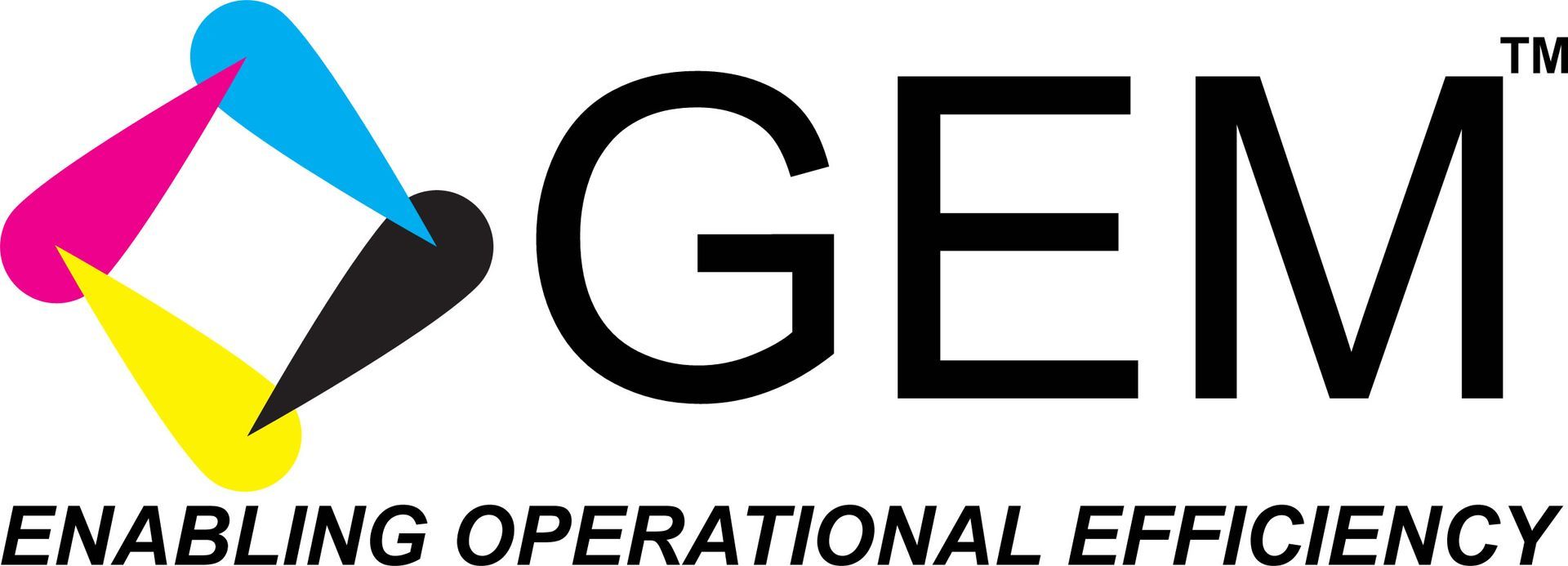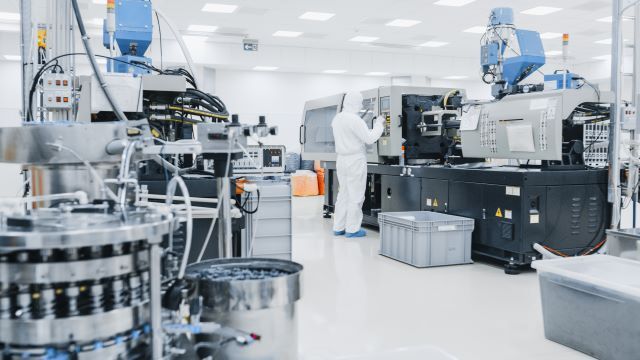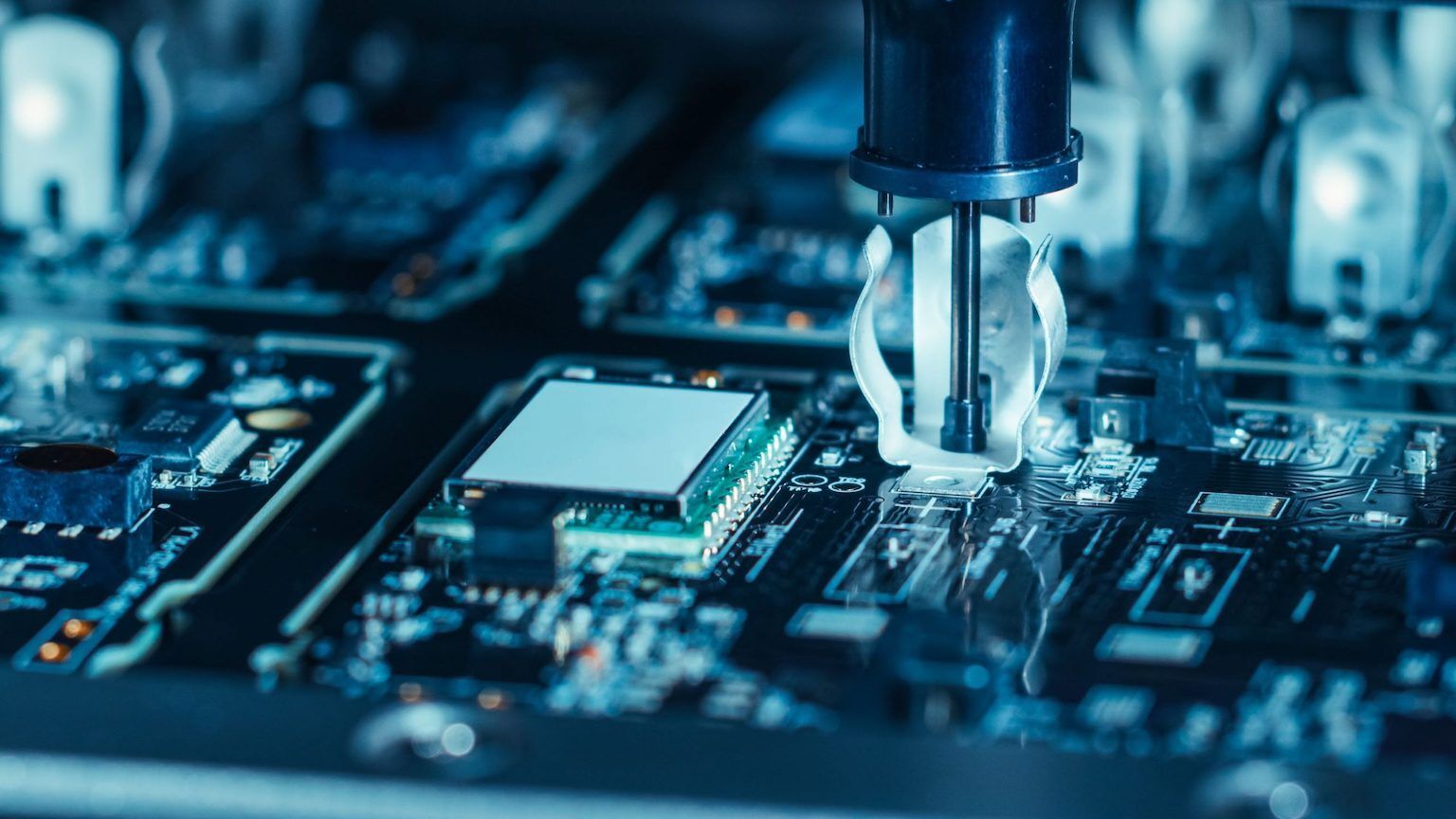On Cyber-Physical Systems, IIoT and Digital Twins
With GEMBO PRECARE IIoT Platform for OEE and Predictive Maintenance
The Cyber Physical System (CPS), Internet of Things (IoT) and Digital Twin are all central concepts in Industry 4.0, often used interchangeably in discussions about Industry 4.0. It is therefore worthwhile to examine what each means and how they relate to each other.
The phrase ‘Cyber Physical System’ is said to have been coined for the first time in 2006 by Helen Gill of the National Science Foundation (NSF). The origin of the phrase ‘Internet of Things’ is generally ascribed to Kevin Ashton while at MIT in 1999, whereas the origin of the phrase ‘Digital Twin’ is generally ascribed to Michael Grieves while at University of Michigan in 2001. The phrase ‘Industrial Internet of Things’ was a recent addition to indicate the use of IoT in industrial applications as opposed to consumer applications.
A CPS is generally defined as a combination of physical (mechanical) components, transducers (sensors and actuators), and information technology (IT) systems (network/communication systems and computation/analysis/control systems). Some definitions include the human, such as the machine operator. In other words, a CPS is a physical world system (machine only or machine plus human) that is connected to the cyber world. A CPS can be either a closed-loop or open-loop system; meaning that it may sense the real-world parameters of the physical system and control it, or it may just sense the real-world parameters and make these available for analytical purposes.
IoT or IIoT is generally defined as a combination of any of the following: trackable objects (such as RFID tags), data objects (such as sensors), interactive objects (such as actuators) and smart objects (such as software components that act on sensor data for any purpose, including pre-processing, control, analytics, etc.).
A Digital Twin is a digital replica of a physical asset. The definition of a Digital Twin emphasizes the connection between the physical and the digital replica, and the data that is generated using sensors. A Digital Twin integrates transducers, artificial intelligence/machine learning, data analytics and context awareness. An example of context awareness is an intelligent thermostat, which senses who is present, so that the person’s preferences for ambient conditions can be taken into consideration.
The CPS concept emerged primarily from a systems engineering and control perspective, whereas the IoT concept emerged primarily from a networking and IT perspective with origins in the RFID context. The Digital Twin concept on the other hand, emerged from an artificial intelligence/machine learning perspective. Nonetheless, all three can be and are being used interchangeably, given that the definitions of the three concepts are converging over time.
GEMBO Precare agent technology IP straddles all three definitions and therefore GEMBO refers to CPS, IoT/IIoT and Digital Twin interchangeably. GEMBO agents acquire data on status, operation, ambient conditions, operator-in-the-loop, as well as other aspects of the operation of a machine, resulting in a multi-dimensional Digital Twin representation of a machine. The agents assign semantical meaning to the data, creating an exact digital replica of the machine’s visible/non-visible signaling interface. GEMBO agents can be additive to an existing in-the-loop controller, such as a PLC, they can be integrated into the in-the-loop-controller, or they can include the in-the-loop controller.
GEMBO agent technology IP is application-agnostic and can be deployed in any industrial or consumer application. In addition, GEMBO has developed market leading subject matter experience in particular in smart manufacturing, with focus on semiconductor and electronics manufacturing.
GEMBO Precare agents seamlessly connect manufacturing equipment to the GEMBO Precare Industry 4.0 IIoT platform, which provides manufacturers literally overnight with an upgrade to smart manufacturing without the cost of overhauling their factory floors with new equipment. The solution provides manufacturers with important KPIs, such as OEE, availability, performance, quality, MTBF, MTBA as well as the ability to predict when to conduct equipment maintenance.

GEMBO ( www.gembo.co ) has a SaaS Industrial IOT Platform which provides enterprises and users with mission critical data, insights and decision making tools enabling cost reduction and revenue growth through optimization via the use of IoT, Artificial Intelligence and Machine Learning. Farm Operator Intro A large-scale solar farm operator, managing a 50 MW solar farm with significant investments in infrastructure. The solar farm has a current efficiency of 24% and a target of increasing this efficiency over time. The farm operates in an area where electricity prices are approximately $32 per MWh, and it has a large operational budget dedicated to maintaining its equipment. GEM has deployed the Precare cloud, predictive maintenance and solar power prediction Package, on the customers Data, extracted from the solar farm's SCADA system. Problem Due to the complexity of solar equipment and environmental factors, the customer has faced a gradual decline in efficiency, dropping from 26% to 24% over the past few years. As a result, the farm's revenue has been impacted by lower power output, and operational expenses have been steadily increasing. Furthermore, the lack of predictive maintenance (PdM) has led to frequent downtime and unplanned maintenance, further increasing the inefficiencies. The farm owner reached out for a solution that could improve operational efficiency, reduce costs, and enhance overall power production by using predictive analytics to forecast and mitigate potential issues before they occur. Solution After evaluating the farm’s needs and existing system, GEM’s Predictive Maintenance (PdM) and Solar Power Prediction packages were discussed and found as the right fit. This solution was implemented through GEM’s Precare analytics platform, which helps monitor and predict performance, detect faults early, and optimize maintenance schedules. The key components of GEM’s solution included: Real-time Monitoring: Continuous monitoring of solar inverters, panels, and environmental conditions. Predictive Maintenance: Advanced machine learning models to predict the likelihood of system failures and performance degradation. Power Output Forecasting: Predictive analytics to model expected energy production based on historical data and real-time inputs, leading to more accurate forecasting and optimizing grid management. Results After deploying GEM’s predictive maintenance and power optimization system, GEM provided the customer a calculation of a 3 year business analysis Financial Benefits: Revenue Increase: The system’s efficiency would increase by an additional $864,320 in revenue over 3 years due to the increased power output from the higher efficiency (25% vs. 24%). OPEX Reduction: Predictive maintenance would reduce the monthly operational expenses by 3%, leading to OPEX savings of $78,810 over the 3-year period. Net Benefits: The customer will realize a total net benefit of $758,130 after deducting the initial system cost and subscription fees. ROI: The ROI of 658.13% was computed from the net benefits of $758,130 after accounting for system cost investments.

SELF SERVICE DATA STUDIO CASE STUDY This case study showcases GEMBO, a leader in SaaS Industrial IoT Platforms, enhancing a global manufacturer's operations by deploying its Precare Data Studio BI product across 70 machines. The solution, focused on self-service data management and analytics, resulted in significant manpower savings, improved self-service efficiency, and automated analytics distribution. Unique to GEMBO Precare is its ability to deploy independent sensors, connecting any machine to its cloud, thereby offering predictive maintenance and operational insights without substantial capital expenditure, distinguishing it from other market solutions.

GEMBO ( www.gembo.co ) is a leading innovator in the world of SaaS Industrial IoT Platforms, with a proven track record of delivering cutting-edge solutions that help customers achieve their business goals. The company's platform uses a combination of IoT, machine learning, and AI to provide customers with real-time insights into their operations, enabling them to make better decisions and optimize their performance. GEMBO is committed to continuous innovation, and the company is constantly looking for new ways to use technology to help its customers succeed. Customer Intro The customer is a multi $B Tier one manufacturer, with multiple factories around the globe. Manufacturing lines vary between electronic manufacturing to semiconductor, serving a variety of markets including Automotive, Networking, Industrial, Audio and Gaming. GEM has deployed Precare Cloud , Precare Edge , OEE Availability and predictive analytics Package . Its footprint grew from a few machines to over 90 machines in a few of their factories. Problem The customer has been utilizing OEE Availability analytics to identify machines with low availability and assigning them to responsible technicians. The customer's management team has been overwhelmed with emails from technicians providing status updates on the machines after they have taken corrective actions. The customer intends to streamline the process of monitoring machine status from the receipt of OEE Availability status to the resolution of availability issues, enabling the machines to operate efficiently based on established availability KPIs. The customer has provided the following workflow to illustrate their requirements.

GEMBO ( www.gembo.co ) is a leading innovator in the world of SaaS Industrial IoT Platforms, with a proven track record of delivering cutting-edge solutions that help customers achieve their business goals. The company's platform uses a combination of IoT, machine learning, and AI to provide customers with real-time insights into their operations, enabling them to make better decisions and optimize their performance. GEMBO is committed to continuous innovation, and the company is constantly looking for new ways to use technology to help its customers succeed. Customer Intro The customer is a Tier 1 multi-billion dollar global manufacturing leader in the power, discrete semiconductor, and passive electronic components (PES) space. GEMBO has deployed a suite of innovative, cloud-based solutions to the customer, including Precare Cloud, Precare Edge, OEE Availability, Performance, and Quality packages. These solutions have been deployed to 70 machines across two factory floors, and the customer intends to scale the deployment across their entire Asia-Pacific footprint. Problem The customer's equipment engineering team has been managing the productivity of their machines through manual Excel reports. These reports are prepared by machine operators, checked and consolidated by supervisors, and then reported to management by factory floor managers. The customer needs to minimize or eliminate these manual reports to improve the accuracy of the reports and save on manpower costs. The following are examples of manual reports that the customer needs to eliminate: 1. Calculation of the share of subcategories of Performance and Quality 2. Calculation of the percentage of Planned Downtime to Total Run Time 3. Graphical presentation of OEE Availability with Time Frame These reports are time-consuming and error-prone. They also require a significant amount of manpower to create and maintain. By eliminating these manual reports, the customer can improve the accuracy of their productivity data and save on manpower costs. Solution After a technical discussion with the customer, GEM integrated the manual Excel reports into the OEE analytics framework. The team then implemented the following process: Define the customer requirements Gather the excel reports Create an output image showing changes in the analytics Define data to be collected Collect data from the customers Collect the data from customer Validate the completeness of the data based on the requirements Collect missing data Confirm with customer if all data are accurate and structured properly based on their requirements Prepare the design Overview Customer Requirements Use Case System Diagram Code Diagram Review and approval of the design Testing on Developer Environment Deployment to Production Customer acceptance Results The migration of previously manually prepared OEE reports to a digital format using OEE Analytics resulted in the following benefits: 100% savings on manpower costs, as the reports are now generated automatically and do not require manual input. 100% accuracy, as the data is collected directly from the machines and is not subject to human error. 100% time savings for management, as they no longer need to spend time reviewing and validating the reports. Improved decision-making, as the Operations Group can now access real-time data and insights to make better decisions. Increased efficiency, as the Operations Group can now focus on core tasks and not on data entry and reporting. Conclusions GEMBO Precare has a set of powerful data acquisition, analytics, predictive and OEE tools for manufacturing equipment. GEMBO Precare compiles critical KPIs that can be used to easily trace back which machine or machine subsystem is responsible for a low KPI score. GEMBO Precare is also able to make predictions at equal or better than humanly possible for machine maintenance to be scheduled before a failure occurs. But most importantly, unlike other market solutions, GEMBO Precare is able to deploy its own sensors independently from any machine controller and fully connect any machine data island to the GEMBO Precare Cloud at a fraction of the cost of a new machine; hence, saving manufacturers from having to make large and risky CAPEX and OPEX investments for new machines. Contact Us Visit us at www.gembo.co or contact us via email at sales@gembo.co






